As Graham has remarked it’s been a dry frosty winter here in Canberra.
End of winter is in sight with the first pseudonarcissus and jonquilla in flower.
There are some nice tazettas that have survived the frost.
As always the bubocodiums are happy.
A few monsters have flowered. It will be interesting to see if these characteristics are stable.
Make of it what you will there does appear to be a seriously split new seedling.
It’s parent is an inconsistent splitter so there is at least some stability in this characteristic.
Other interesting splits have flowered but they have a huge question mark over them.
A passable 2 headed bulbocodium has flowered but I don’t expect it to be reliable
Some nice fertile viridiflorus hybrids have been flowering.
Attempts to introduce pink and orange into them have not been very successful in the first generation but there appears to be some ongoing fertility.
The most persistently green flower is probably this one: –
Unfortunately this time of year the cockatoos are hungry and are willing to try anything. They seem to have a taste for my newest and most interesting seedlings including the one below. (That said it is happier inside the house than out in the frost.) Its breeding is Viriquilla x (fernandesii x cyclamineus) and it has good pollen fertility. The hope of introducing cyclamineus genetics into the fertile jonquil hybrids appears to have been achieved.
The most appalling thing the cockatoos have done is gnaw to ground level what is for me a rare new viridiflorus hybrid. Having surmised years ago that green was needed from main division flowers 02_396 was crossed with viridiflorus. I was fortunate enough to get one seedling. And now this! I am hoping that there is an emerging stem (which makes it relatively late). If not then a first flower is probably 2 years away if ever.
There are some more interesting viridiflorus hybrids yet to flower. And a new generation of inter-sectional bulbocodium hybrids are about to start – they should be very interesting!



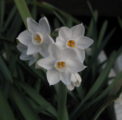
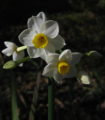
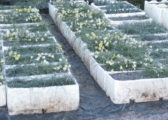
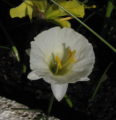
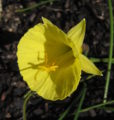
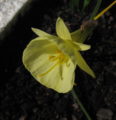

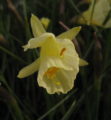
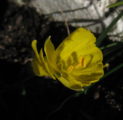

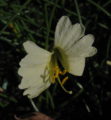
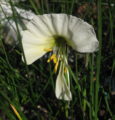

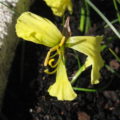




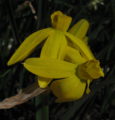
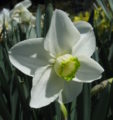

Hi Lawrence,
I see from your nice Viriquilla x (fernandesii x cyclamineus) seedling that you have a pollen fertile fernandesii x cyclamineus. Do you think the pollen grains are unreduced and the Viriquilla x ( fernandesii x cyclamineus) is therefore tetraploid with one chromosome set of jonquilla, one of jonquilla/viridiflorus, one of cylamineus , and one of a standard daffodil?
I think I can generate similar seedlings with the pollen of my fertile Hillstar x cyclamineus seedling. But they should have not so many cyclamineus genes and some more standard daffodil genes.
Theo
Theo
Hi Theo,
I don’t appear to have photos of the pollen but I have a strong recollection that I thought I might get fertile hybrids from it. I regularly test the pollen fertility of these types of hybrids and thus far only fernandesii (Antequerra) x cyclamineus has been promising. The pollen parent is 13_01DJ and I think I have discarded it. I have also used its sibling 09_02DJ. Having confirmed its value I will try to do more crosses with it.
I was concerned at the irregular sized grains in 17_35MJ but the sprouting grains look fairly uniform. I think it is effectively NNJJ.